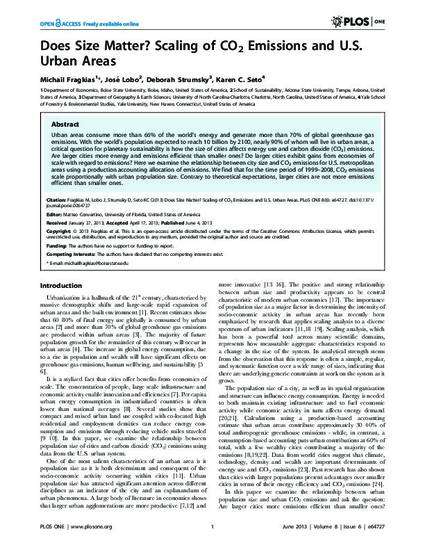
Urban areas consume more than 66% of the world’s energy and generate more than 70% of global greenhouse gas emissions. With the world’s population expected to reach 10 billion by 2100, nearly 90% of whom will live in urban areas, a critical question for planetary sustainability is how the size of cities affects energy use and carbon dioxide (CO2) emissions. Are larger cities more energy and emissions efficient than smaller ones? Do larger cities exhibit gains from economies of scale with regard to emissions? Here we examine the relationship between city size and CO2 emissions for U.S. metropolitan areas using a production accounting allocation of emissions. We find that for the time period of 1999–2008, CO2 emissions scale proportionally with urban population size. Contrary to theoretical expectations, larger cities are not more emissions efficient than smaller ones.
This document was originally published by PLOS ONE. This work is provided under a Creative Commons Attribution license. Details regarding the use of this work can be found at: http://creativecommons.org/licenses/by/3.0/. doi:10.1371/journal.pone.0064727.
Available at: http://works.bepress.com/michail_fragkias/7/
